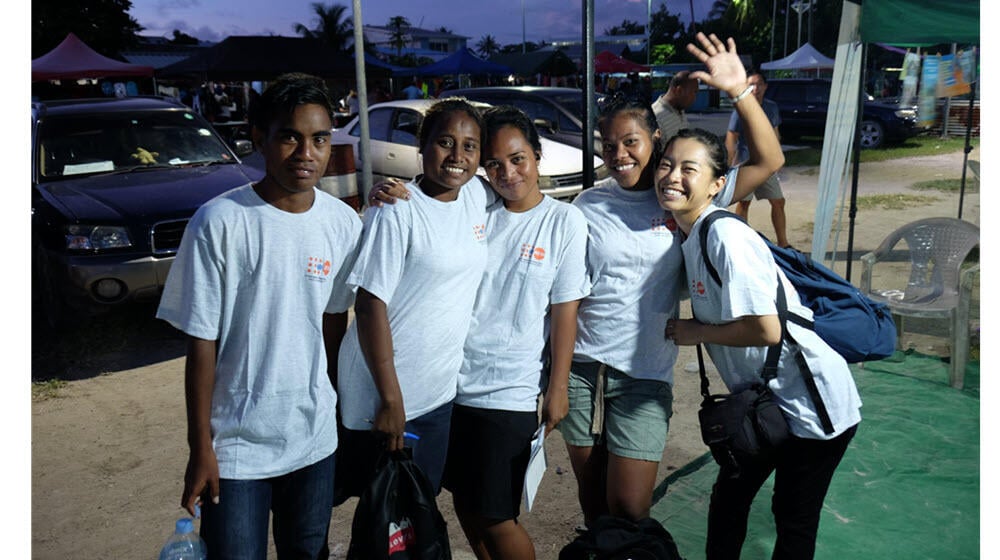SUVA, Fiji - The Pacific region, a mosaic of diverse island nations, is experiencing a challenging demographic shift. Amidst global mega-trends, such as climate change and technological advancements, the Pacific is navigating varied demographic trends – youth bulge, rapid urbanization, high level of out-migration, with varied population pyramids with some increasing while the others on the decline. These dynamics pose challenges, but also offer real opportunities for achieving national development goals as well as regional and international development frameworks, such as at the International Conference on Population and Development (ICPD) Programme of Actions, Agenda 2030 including the Sustainable Development Goals (SDGs), and the region's 2050 Strategy for the Blue Pacific Continent.
Although each domestic circumstance may differ, all Pacific Small Island Developing States (SIDS) have an imminent task in common: factoring population trends into regional, national and local development plans, allocating adequate resources, and tracking the progress of such development goals. As the global community commemorates the World Population Day (WPD) on 11 July, the United Nations Population Fund (UNFPA) Pacific and the University of the South Pacific (USP) are partnering, also with the University of Hawaii, to jointly organize a seminar titled Demographic dynamics: challenges and opportunities in the Pacific. The hybrid seminar brings together hundreds of key stakeholders at the USP main campus in Suva, and also virtually online including technical experts and academics, policymakers, students and other young people, civil society, and development partners.
“Climate change as seen in the rising sea levels and frequent cyclones is threatening the prospects for Pacific SIDS’ sustainable development. Those countries need innovative solutions, also to meet the increasing demands for food, water, health, education, and employment opportunities,” underscores Iori Kato, UNFPA Director for the Pacific Island Countries and Representative in Fiji. “Economic development strategies must adapt to changing demographic trends, including fertility, ageing, domestic and outgoing migrations, and urbanization, particularly to address the unique needs of young people, women, the elderly, persons with disability, to leave no one behind,” he adds.
The total population of the 14 Pacific SIDS served by UNFPA Pacific Sub-Regional Office is projected to reach by 2050 some 3.5 million – a 35% increase from today's 2.6 million. This growth, however, will be uneven, with some countries experiencing a faster rise than others, and a few actually facing decline in population. Overall the Pacific region will continue to be youthful, with 45% (approx. 1.6 million) of the estimated 3.5 million total population in 2025 to be below 25 years of age. These population dynamics are poised to be a major force shaping the Pacific SIDS' sustainable development journey.
“Despite challenges, there are opportunities presented by the Pacific population trends. A young and vibrant population can be a source of innovation and drive economic growth, provided there is investment in education and other essential services for young people who constitute more than half of the Pacific islanders,” emphasizes Professor Gurmeet Singh, Deputy Vice Chancellor of USP.
In line with empowering young people with education and life skills for greater employability to harness the so-called ‘demographic dividends,’ continuous and scaled-up investments need to be made in advancing gender equality and universal access to health including reproductive health and family planning services, and building resilient infrastructure and communities against external shocks such as climate crises and pandemics. Better utilization of ITC and other technologies can defy the challenges caused by distance and isolation in improving access to essential services.
This year 2024 marks another important year for UN Member States. Many of the Pacific SIDS, after participating in the 4th UN Conference on Small Island Developing States (SIDS4) held in Antigua and Barbuda in May, are currently engaging in the High-level Political Forum on Sustainable Development (HLPF) in New York. In two months, UN Member States will gather again in NY over the “Summit of the Future '' to reinvigorate multilateralism and commitment and actions to accelerate the implementation of the 2030 Agenda including the SDGs.
The outcome document adopted at the SIDS4 Conference, the Antigua and Barbuda Agenda for SIDS (ABAS), also highlighted the importance of quality data including through continued enhancement of national statistical systems, to better inform the policy-makers on the interlinkages between demographic trends and sustainable and equitable development. In the Pacific, considerable progress has been made in population data collection in recent years. However, further improvements are needed to ensure that reliable, up-to-date, and inclusive data is regularly collected, analyzed, and utilized in the planning, implementation and monitoring of development programmes, as per the “Data Revolution” that the UN Secretary-General is calling for.
"On this World Population Day 2024, we call for a renewed commitment to understanding and addressing the demographic dynamics of the Pacific, and making investments accordingly for people-centered development,” reiterates UNFPA Pacific Director Kato. “By us working together – the Pacific member states, civil society, communities, local leaders, private sector, academia, women, men, young people, and development partners – we can ensure a future where these dynamics become a source of strength and prosperity for all Pacific Islanders."



